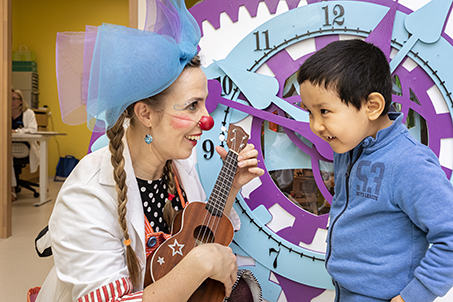Researchers say culture and the arts should have a stronger role in healthcare
The healthcare sector could become increasingly more person-centred, patient-oriented and equal with the help of arts and culture-based approaches. This is one of the statements made by a Finnish expert group of the ArtsEqual initiative in their policy brief titled “Culture and art in hospitals and other health services”.

Studies show that culture and the arts can have positive effects on health.
“Incorporating the arts in healthcare services is an investment in a person’s comprehensive wellbeing. It’s especially important in long-term care,” says researcher Kai Lehikoinen, who is the director of the Center for Educational Research and Academic Development in the Arts (CERADA) at the University of the Arts Helsinki (Uniarts Helsinki) in Finland.
Modern hospitals strive towards the safety of operations, high-quality diagnostics and efficient treatments. Health is examined from the point of view of a person’s biological wellbeing, which is also the basis when planning treatment practices. Not much attention is paid to culture and the arts.
“The experience of chronically ill patients, in particular, is often that they don’t have access to art and culture in their treatment environment,” notes doctoral student Taru-Anneli Koivisto from Uniarts Helsinki.
Culture and the arts benefit health
The positive impact of culture and the arts can have multiple health benefits.
According to an extensive report released by the World Health Organization, the arts can influence the social factors related to health, contribute to children’s development, promote health-enhancing behaviour, prevent illnesses and support treatment of patients. Artistic activities can also help mental health rehabilitees and those with neurological disorders and bring benefits to acute care and the treatment of non-communicable diseases. Art can also play an important role in terminal care.
“It would be wonderful if methods that are proven effective could be integrated efficiently into everyday treatment practices,” says Professor of Clinical Nursing Science Sanna Salanterä from the University of Turku, Finland.
Making organisations more agile through culture
When more attention is devoted to the arts and culture in health services, caring for patients will become increasingly more ethical.
“When we understand the cultural contexts of health, it helps us view patients as individuals whose lives, wellbeing and health are, to a large extent, defined by culture. Taking the patient’s cultural needs into consideration will support their wellbeing in a time of illness and crisis,” Lehikoinen notes.
With the help of art, organisations could establish a more open way of doing and discussing things, experts explain. This would help personnel working in health service organisations adopt a more balanced view of what wellbeing entails and strengthen their mutual trust. As a result, organisations could also become more agile than before.
The policy brief on culture and art in hospitals and other health services has been published by the ArtsEqual research initiative. Its authors are doctoral student Taru-Anneli Koivisto and Director of CERADA Research Center Kai Lehikoinen from Uniarts Helsinki, Art and Wellbeing Expert Pauliina Lapio from New Beat Consulting, Principal Lecturer in Culture and Wellbeing Liisa-Maria Lilja-Viherlampi from the Arts Academy of Turku University of Applied Sciences, and Professor of Clinical Nursing Science Sanna Salanterä from the University of Turku.